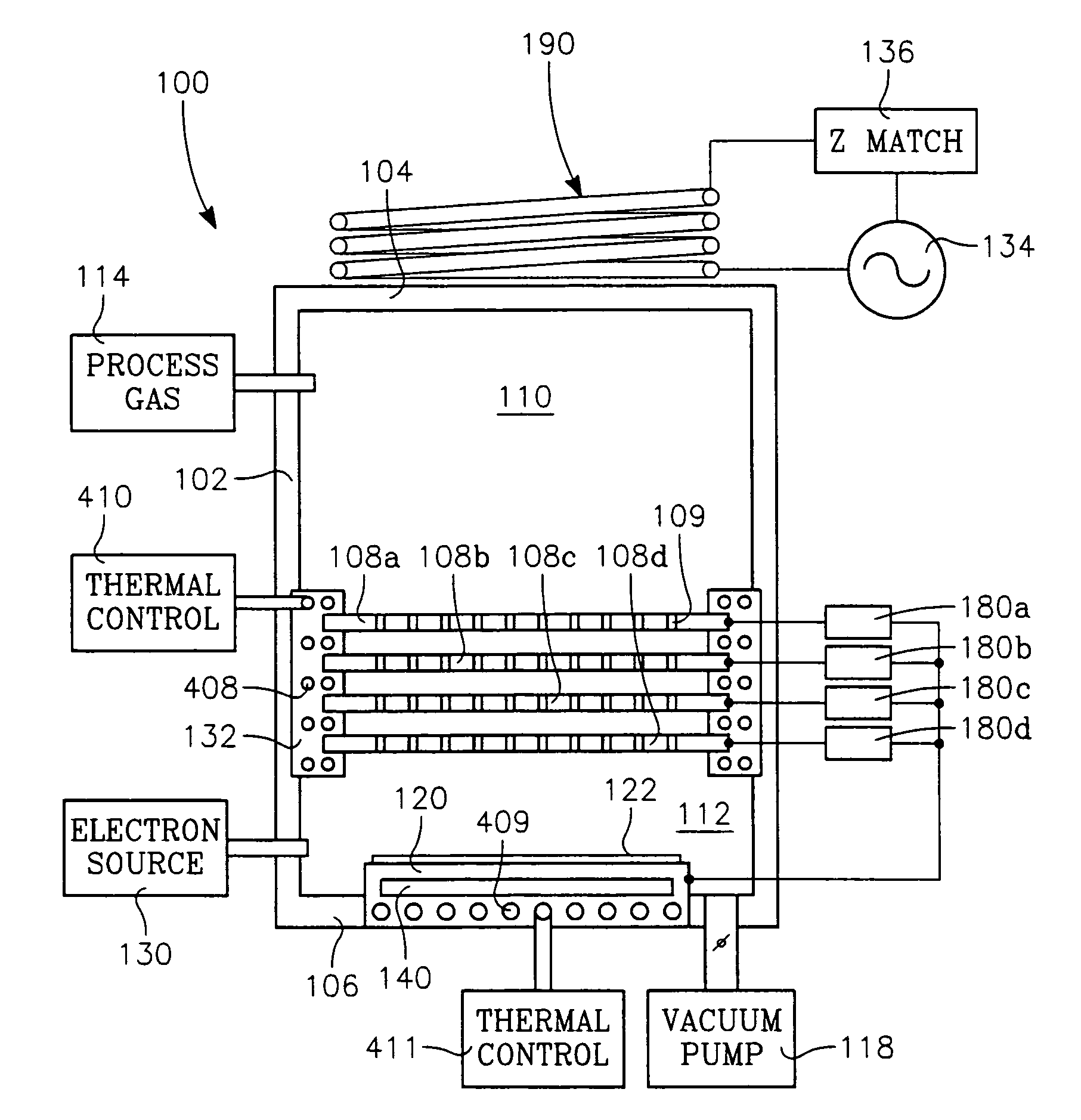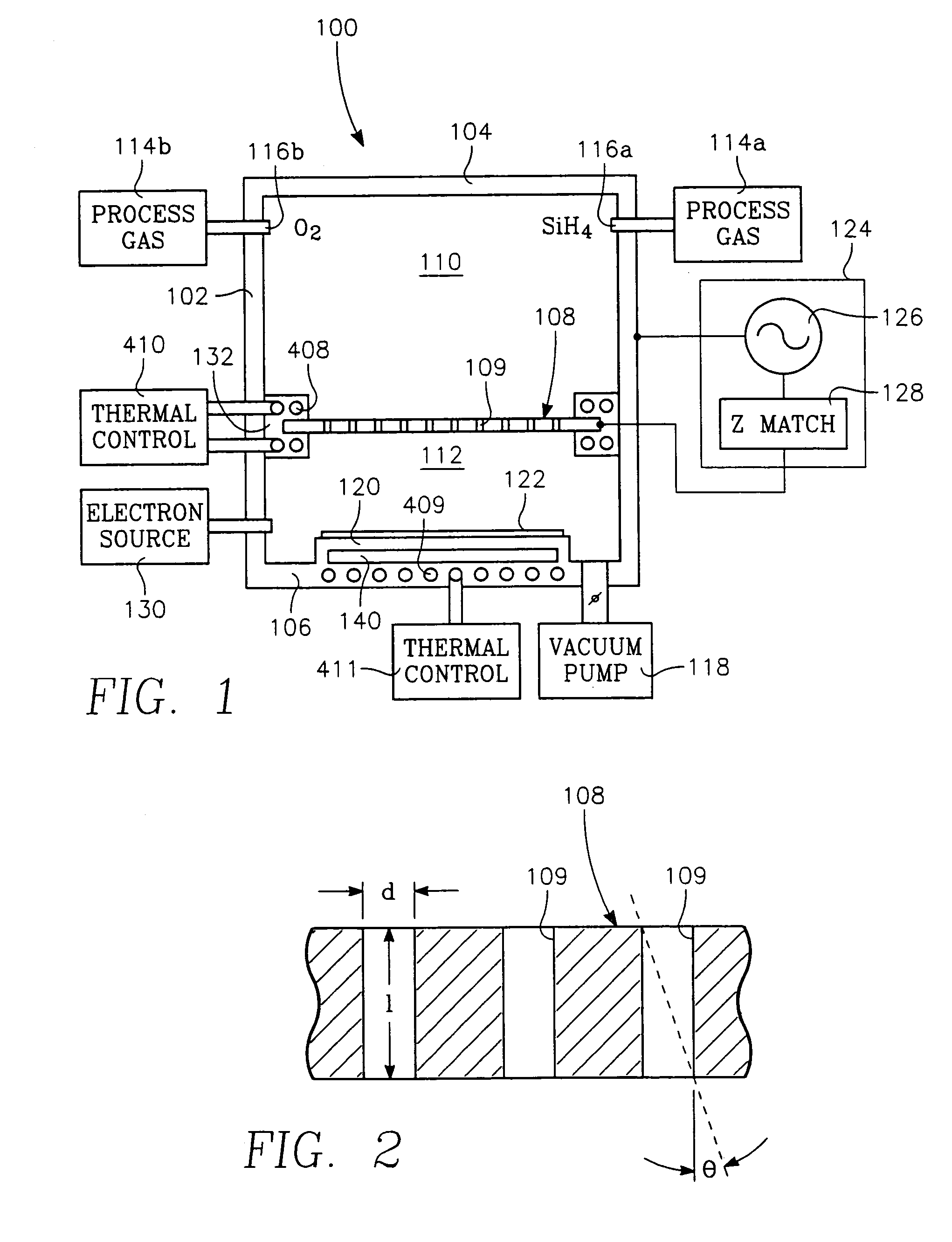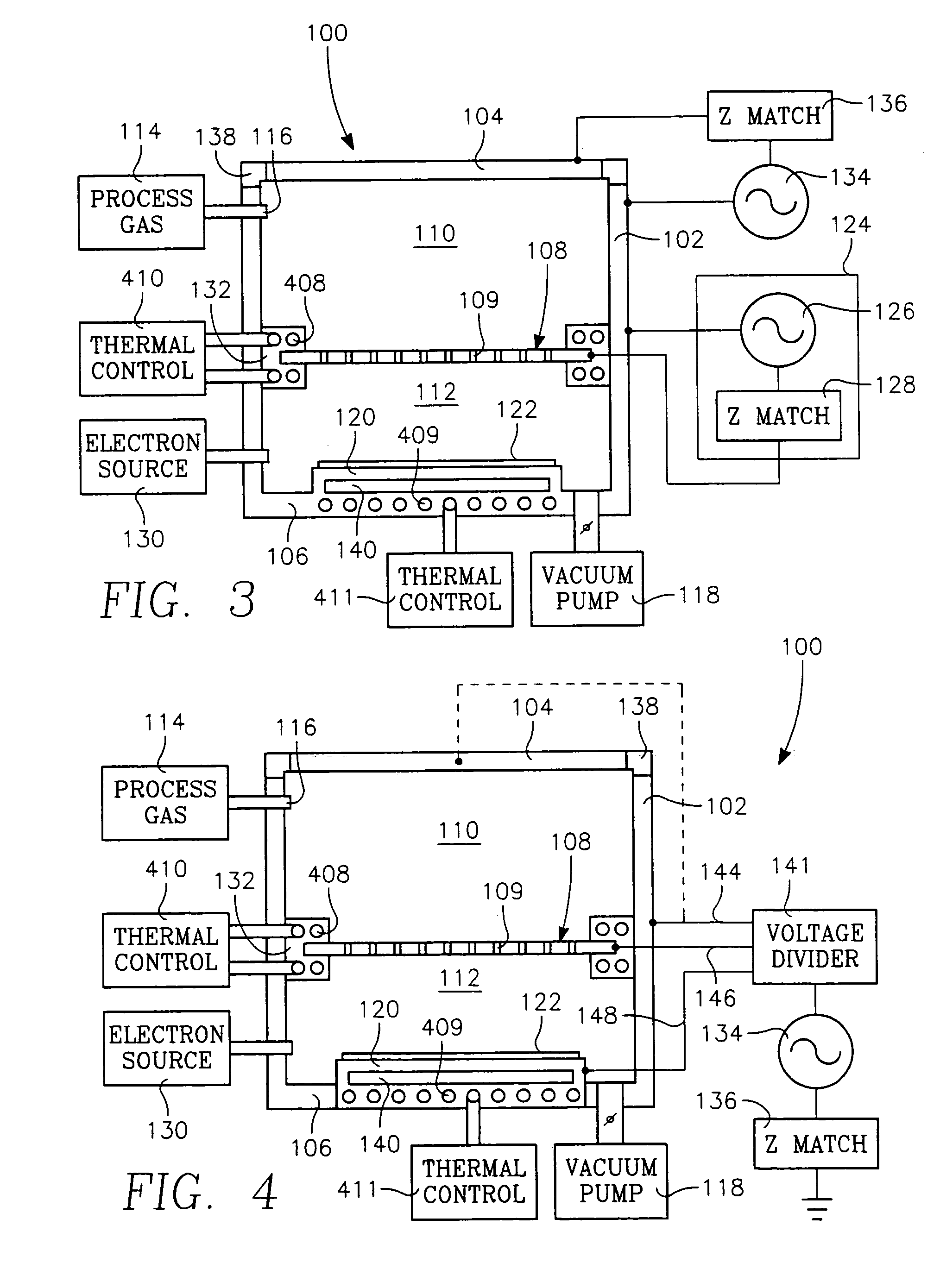Chemical vapor deposition plasma reactor having plural ion shower grids
a plasma reactor and plasma technology, applied in the direction of vacuum evaporation coating, chemical vapor deposition coating, coating, etc., can solve the problems of slow deposition rate, low wafer throughput, and unsuitable sacvd process for devices having feature sizes
- Summary
- Abstract
- Description
- Claims
- Application Information
AI Technical Summary
Problems solved by technology
Method used
Image
Examples
second embodiment
[0048]In a second embodiment, there are multiple parallel grids whose holes are in mutual vertical alignment, each grid being driven by a separate or independent voltage, these voltages being configured to provide a progressive transition from the plasma potential (at the top-most grid) to the highest grid potential (at the bottom grid).
third embodiment
[0049]In a third embodiment, the independent voltages applied to the multiple parallel grids are configured to focus the ions to minimize collisions with the side walls of the holes of the grids. This configuration may involve an alternating sequence of acceleration and deceleration voltages from the top grid to the bottom grid.
fourth embodiment
[0050]In a fourth embodiment, the grid voltage source is decoupled from plasma generation by providing a separate plasma source power applicator directed to the upper plasma generation sub-chamber, and may be a reentrant torroidal plasma source. The plasma potential as well as the plasma source power applicator floats at the potential established by the grid voltage source, which may be in the range of 100 to 5000 volts, and the plasma source power voltage is superimposed (floats) on top of the grid potential. By thus decoupling plasma source power from the grid voltage, independent control may be exerted over the plasma ion density and the ion acceleration or grid potential. The grid potential determines the ion velocity profile as well as the ion / neutral population ratio in the lower sub-chamber. For example, at the highest grid voltage, ions are energetically pulled from the plasma in the upper sub-chamber to the lower sub-chamber with a minimum proportion of neutrals. At a minim...
PUM
| Property | Measurement | Unit |
|---|---|---|
| temperature | aaaaa | aaaaa |
| feature sizes | aaaaa | aaaaa |
| temperature | aaaaa | aaaaa |
Abstract
Description
Claims
Application Information
 Login to View More
Login to View More - R&D
- Intellectual Property
- Life Sciences
- Materials
- Tech Scout
- Unparalleled Data Quality
- Higher Quality Content
- 60% Fewer Hallucinations
Browse by: Latest US Patents, China's latest patents, Technical Efficacy Thesaurus, Application Domain, Technology Topic, Popular Technical Reports.
© 2025 PatSnap. All rights reserved.Legal|Privacy policy|Modern Slavery Act Transparency Statement|Sitemap|About US| Contact US: help@patsnap.com



